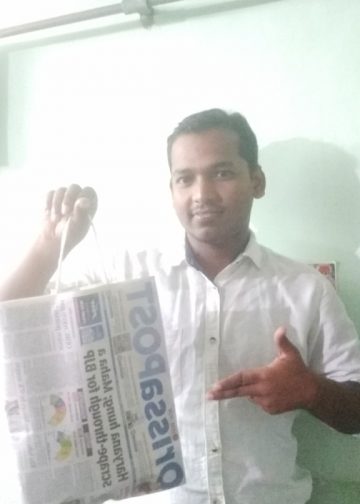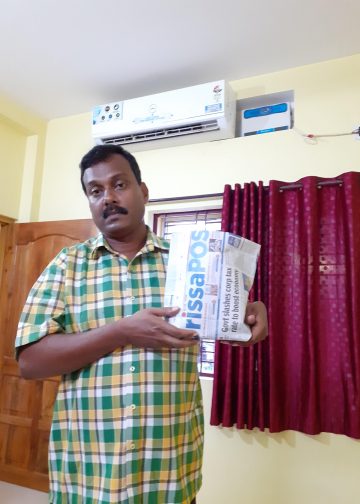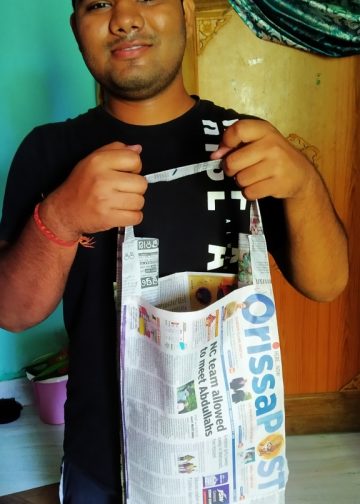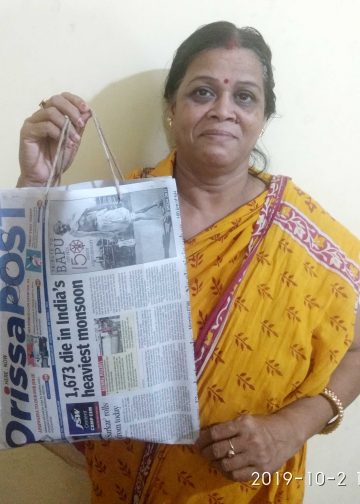Chandbali: Ingress of saline water from the Bay of Bengal is wreaking havoc on farmlands in scores of riparian villages along Baitarani, Salandi and Mantei rivers under Chandbali block of Bhadrak district.
Apart from saline water ingress, other problems ailing the farmers are the presence of crocodiles and frequent collapse of river embankments.
Over 20 riparian panchayats are facing saline ingression over the years, but no preventive measures are being taken, it is alleged. Saline water is not just damaging kharif and rabi crops, but also impacting fish production in freshwater bodies in the area, farmers rued.
“Saline water has been affecting dalua paddy, rabi crops, and vegetables in the area,” said assistant block agriculture officer Udaybhanu Sahu.
According to a report of the agriculture department, there are 268 revenue villages and 21 hamlets in 39 panchayats of the block. At least 34,848 hectares of land are covered under agriculture, but of these, 7,800 hectares of land was affected by saline ingression in the block. The department assesses that 20,200 hectares of land in the entire district was affected by saline water.
Farmers say their kharif crop is hit by floods every year. They have to raise dalua crops, but saline water has been a major threat. Many farmers have now stopped doing dalua paddy cultivation.
Seawater enters though Baitarani, Salandi and Mantei and finally floods the farmlands through canals once every lunar cycle usually from February to June.
An increase in prawn farming along the river banks and creeks is also said to be responsible for entry of saline water into farmlands, farmers said.
They added that prawn famers are pumping saline water into their ponds. Some prawn farmers are even digging through canal embankments to facilitate saline water into their ponds.
Some prawn farmers are even said to be lifting the shutters of sluice gates at Galia and Haladigand. Paddy farmers alleged that they are facing the risk of losing their main source of livelihood due to saline water ingress by prawn farmers while no action is being taken against the latter.
They also pointed out that there are no sluice gates across canals and creeks, due to which saline water finds free access through canals from rivers and finally into farmlands.
The government has made a proposal to prevent entry of saline water from rivers, but it has not been executed as yet.
The proposed Chandbali-Chaddia anti-tsunami project has received requisite approvals. The project is to be funded by Word Bank and OSDMSA.
It was estimated that about 1.03 lakh people will benefit from the project in 30 villages of Panchapada, Chandbali, Bijay Nagar, Orasahi, Kandagaradi, Chaddia, Nalagohaira and Mousudha panchayats. It will help prevent entry of saline water into 3,675 hectares of land.
“To control entry of saline water from the sea, there is a need to fix shutters in existing sluice gates,” said Bijay Kumar Sahu, a farmer.
Udit Kumar Ray, an agriculture scientist of Bhadrak, said farmers can make good profits by raising some varieties of paddy like Basmati, Lilabati, Laxmibilash and Kalajira in saline-hit farmlands. Salt-resistant paddy varieties may be considered for cultivation, he added.
Locals said Kanika king Rajendra Narayan Bhanjdeo had several years ago built high earth embankments along the Baitarani, Salandi and Mantei in order to prevent entry of saline water.
The embankments were then popularly called as ‘luna bandh’ by locals.
Water intensive trees were planted along the embankments in order to prevent soil erosion. Embankments with spans of 140 km are under the Bhadrak irrigation division and Balasore irrigation division. PNN







































